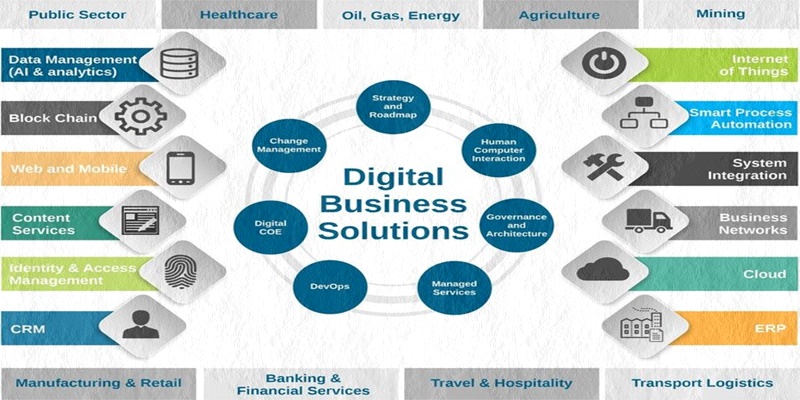How to Get True Sustainability Gains from Technology Solutions

Organisations’ commitment to improving their sustainability is at a high, but the rising price of renewable energy and carbon offsetting is forcing a rethink of how to reduce carbon emissions.
Many organisations are moving on from the ‘simple’ decisions to change energy supplier or to outsource carbon offsetting and are looking at what technology can offer. And although technology solutions can come with several barriers to adoption, these can be overcome through greater collaboration – between IT and OT (Operational Technology), with partners and with the wider supply ecosystem.
Sustainability is a priority worth a premium
New GlobalData research with sustainability decision-makers across a broad range of industries around the world shows that 86% of enterprises see sustainability as a major factor in their organisation’s decision-making process. What’s more, today’s organisations are ready to pay a premium for products and services with a proven impact on sustainability objectives – 71% would pay at least 5% more and 32% would pay more than 20% extra.
Sustainability has clearly evolved from an option to a strategic priority. So, what’s holding organisations back from immediately unlocking the potential of technology in this arena?
Identifying concerns is the first step to successful sustainability
As we tend to see with any increase in technology, organisations are concerned about the security implications (54%). The research shows that this concern is focused on the data implications of sustainability.
Accurate, smart data is critical to consistently measuring carbon emissions and energy usage to identify sustainability improvements and whether existing sustainability efforts are having an impact. This involves deep data gathering and sharing at unprecedented levels, which potentially exposes enterprises to greater data security risks.
These security concerns overlap with worries about achieving integration between OT and IT (49%), too. After all, there’s no point in getting a whole network of sensors in place across the enterprise if valuable data is going to be lost in the gap between OT and IT.
Understandably, concerns about the cost of a technology solution and tight budgets came up for 44% of organisations. Although enterprises will pay a premium for solutions that have proven sustainability benefits, so many had suffered from ‘pilot purgatory’, where enterprises fund multiple pilot projects but don’t get clear results on how far they’ve improved sustainability. The research reveals that 97% of enterprises have launched pilot sustainability projects, but only 44% of these felt that the projects had had tangible benefits.
And if a sustainability technology project makes it beyond the pilot stage, organisations often have concerns about its reliability (40%) or how well it will integrate with existing software solutions (36%).
Collaboration is the route to effective sustainability technology
In my experience, collaboration is the answer to so many of these concerns, guiding organisations to the point where they’re getting quantifiable sustainability improvements from their technology investments.
Collaboration is key on so many levels. It starts internally, with unifying teams behind initiatives that let data flow freely across the organisation.
It then needs to extend out to technology partners, and on to their ecosystem of partners. Right now, no one single technology vendor has a complete off-the-shelf solution to increase sustainability. Trusted technology partners will securely bring together vendor collaborations that are best-in-class and tailored to the organisation’s specific needs.
Customers are telling me that the in-house model isn’t working for sustainability. As the need for external validation grows, and organisations are looking more at achieving Scope 3 improvements, collaborating with an ecosystem of partnerships is a fundamental part of success.
Next steps towards making sustainable technology solutions a reality
Building on the insights of the research, and following the theme of collaboration, I recommend the following:
#1 Unify your teams
Look at how you can bring together internal teams to drive digital transformation and sustainability side by side. As separate teams they can achieve a lot, but together they can accelerate your organisation’s journey to net zero.
#2 Get your stakeholders on board
Early engagement with stakeholders will let you understand their needs in relation to sustainability and will help you identify where there are opportunities for mutual benefit.
#3 Seek out and collaborate with technological expertise
Both internally and externally, find and work with the people who have a deep understanding of the technology you want to use. This is key to achieving those last few percentage points that will mean you reach net zero.
#4 Draw on your partnerships
Be prepared to challenge your technology partners on their sustainability credentials and probe how they can help your organisation achieve its sustainability goals.
Plan your sustainable future
Today, organisations have an opportunity to push beyond the standard approaches to sustainability with technology solutions that can bring a step-change in results. The research showed enterprises think artificial intelligence (40%), collaboration tech (24%) and robotic process automation (21%) will be the main technologies to improve efficiency and reduce their carbon footprints over the next three years.
By Sarwar Khan,
Head of Global Digital Sustainability, BT
In commemorating #ZeroEmissionsDay, global research delves into the role of digital services in helping organisations become sustainable and achieve net zero.
